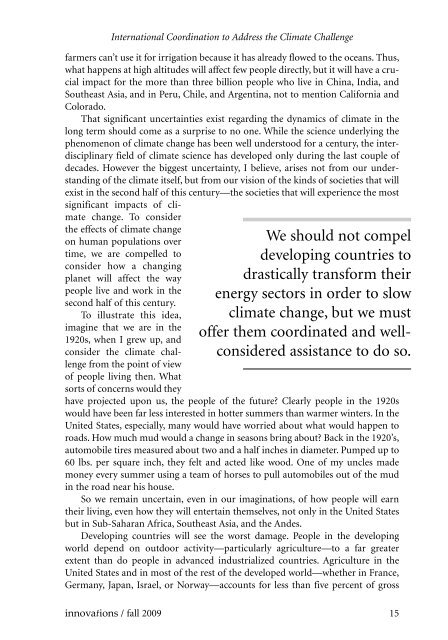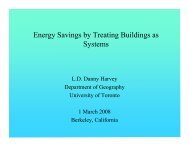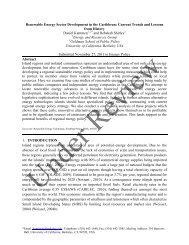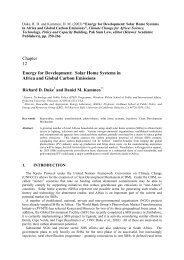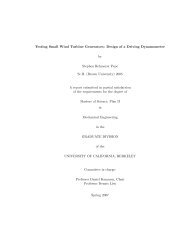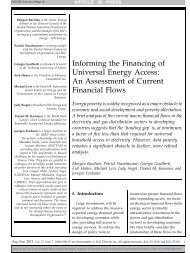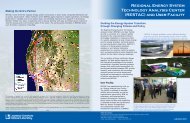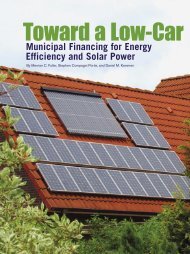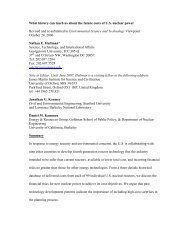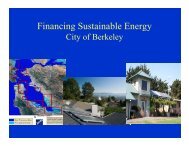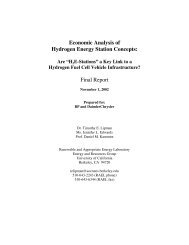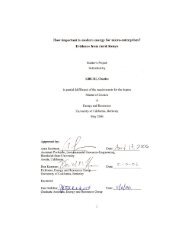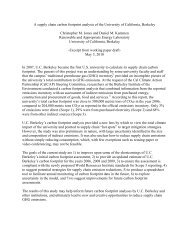Innovations, Energy for Change, Fall 2009.pdf - Renewable and ...
Innovations, Energy for Change, Fall 2009.pdf - Renewable and ...
Innovations, Energy for Change, Fall 2009.pdf - Renewable and ...
You also want an ePaper? Increase the reach of your titles
YUMPU automatically turns print PDFs into web optimized ePapers that Google loves.
International Coordination to Address the Climate Challenge<br />
farmers can’t use it <strong>for</strong> irrigation because it has already flowed to the oceans. Thus,<br />
what happens at high altitudes will affect few people directly, but it will have a crucial<br />
impact <strong>for</strong> the more than three billion people who live in China, India, <strong>and</strong><br />
Southeast Asia, <strong>and</strong> in Peru, Chile, <strong>and</strong> Argentina, not to mention Cali<strong>for</strong>nia <strong>and</strong><br />
Colorado.<br />
That significant uncertainties exist regarding the dynamics of climate in the<br />
long term should come as a surprise to no one. While the science underlying the<br />
phenomenon of climate change has been well understood <strong>for</strong> a century, the interdisciplinary<br />
field of climate science has developed only during the last couple of<br />
decades. However the biggest uncertainty, I believe, arises not from our underst<strong>and</strong>ing<br />
of the climate itself, but from our vision of the kinds of societies that will<br />
exist in the second half of this century—the societies that will experience the most<br />
significant impacts of climate<br />
change. To consider<br />
the effects of climate change<br />
on human populations over<br />
time, we are compelled to<br />
consider how a changing<br />
planet will affect the way<br />
people live <strong>and</strong> work in the<br />
second half of this century.<br />
To illustrate this idea,<br />
imagine that we are in the<br />
1920s, when I grew up, <strong>and</strong><br />
consider the climate challenge<br />
from the point of view<br />
of people living then. What<br />
sorts of concerns would they<br />
have projected upon us, the people of the future? Clearly people in the 1920s<br />
would have been far less interested in hotter summers than warmer winters. In the<br />
United States, especially, many would have worried about what would happen to<br />
roads. How much mud would a change in seasons bring about? Back in the 1920’s,<br />
automobile tires measured about two <strong>and</strong> a half inches in diameter. Pumped up to<br />
60 lbs. per square inch, they felt <strong>and</strong> acted like wood. One of my uncles made<br />
money every summer using a team of horses to pull automobiles out of the mud<br />
in the road near his house.<br />
So we remain uncertain, even in our imaginations, of how people will earn<br />
their living, even how they will entertain themselves, not only in the United States<br />
but in Sub-Saharan Africa, Southeast Asia, <strong>and</strong> the Andes.<br />
Developing countries will see the worst damage. People in the developing<br />
world depend on outdoor activity—particularly agriculture—to a far greater<br />
extent than do people in advanced industrialized countries. Agriculture in the<br />
United States <strong>and</strong> in most of the rest of the developed world—whether in France,<br />
Germany, Japan, Israel, or Norway—accounts <strong>for</strong> less than five percent of gross<br />
We should not compel<br />
developing countries to<br />
drastically trans<strong>for</strong>m their<br />
energy sectors in order to slow<br />
climate change, but we must<br />
offer them coordinated <strong>and</strong> wellconsidered<br />
assistance to do so.<br />
innovations / fall 2009 15


